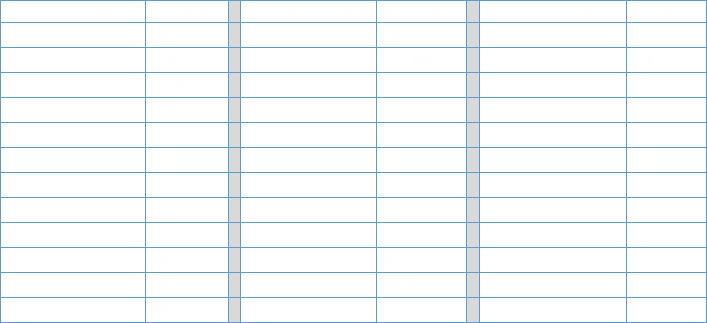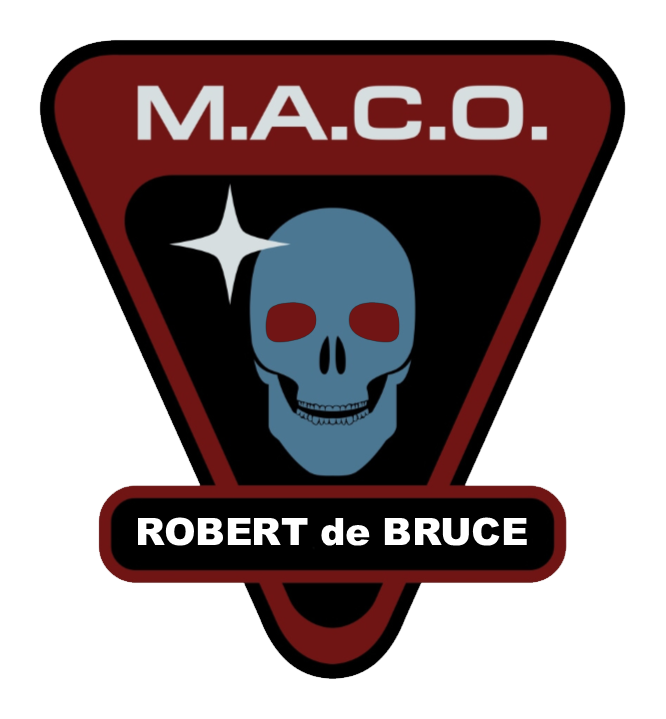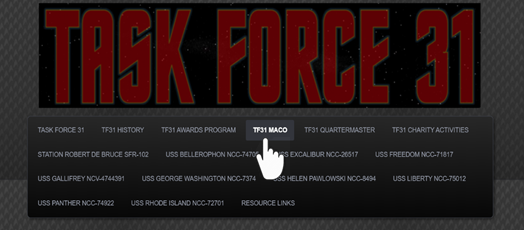

How does MACO fit into the Star Trek Universe?
The Military Assault Command Operations is “cannon” in the Star Trek Universe, first seen on Star Trek: Enterprise and is a United Earth Military organization created from the remaining Special Forces units from around the Earth after World War III. When the United Federation of Planets was formed, the Military Assault Command Operations was originally disbanded for the Starfleet. But, in several novelizations and with in the Star Trek Online gaming program, the Military Assault Command Operations was reorganized and brought back as one of Starfleet’s elite special operations unit. Taking this all into consideration the modern day comparison would be that Starfleet is like the United States Navy and the special operations unit associated to it would be the Navy SEALs.
Fictionally, we are the special operations element of STF31. Because STF31 is modeled along traditional Naval lines, it is only logical that we chose to use the name Starfleet Task Force 31 Military Assault Command Operations. Since most of our members are from the United States, it is only natural to exhibit a tendency to identify with the US Special Operational Forces, but we must be ever vigilant against overdoing it. Imitation is the highest form of flattery, but there is a fine line between flattery and mockery – we must ALWAYS be on the right side of that line.
Because MACO Operators are scattered pretty thin throughout Task Force 31, we encourage and even expect you to show personal initiative. This manual gives you most of the background information you need to be a “MACO Operator”. But to make a name for yourself, to earn respect, and to be recognized for your abilities, you will have to take charge of yourself and set some goals, then work towards them. Leadership starts inside yourself.
The MACO Company reports only once a month (see Chapter 5 for reporting requirements). That responsibility falls on the MACO Company Commander. The Chapter that the MACO Company is assigned to and the MACO Company policies will determine what the responsibilities the MACO Operator has when it comes to communications and reporting for meeting chapters or correspondence chapters. An example: The USS Helen Pawlowski is a correspondence chapter, all crewmembers are required to submit an email report summarizing monthly activities that the crewmember wants to be credited with for that month. This reporting is considered as if the crewmember attended a chapter meeting for that month. This report also provides information needed by the chain of command for possible awards and promotions. Please check with the Chapter CO for that particular chapters policies. But do understand that the entire MACO Command enjoys hearing from both our MACO Companies and Operators, and we are always ready to help however we can.
It has been mentioned several times already throughout this manual and it is very important to understand that if you form a MACO Company (MCO), you will –
· Still be a part of your STF31 Chapter.
· You will be responsible to the Chapter CO for the conduct of your unit.
· The Chapter CO has the final say about your unit as long as your unit is assigned to their chapter.
Some in your chapter may not understand or even like the concept of having a MACO unit assigned to the chapter – it will be up to you to ensure your MCO peacefully coexists with the non-MACO elements of your chapter.
Like many other similar organizations in Trek fandom, MACO also give out awards and other forms of recognition, but as mentioned earlier in this manual, MACO do not promote. Promotions up to Commander come from your ship’s CO, your Sector Commander (SC) can promote individuals to the rank of Captain and the STF31 Fleet Operations Command can promote individuals to the rank of Captain and above. Because all MACO Operators belong to a MACO Company that is also a part of a STF31 chapter, the MACO Company Commander utilizes the chapter chain of command for awards and promotions.
Choosing your MACO Company Basics
Choosing your Individual and Unit Branch of Service
The MACO only has one branch, the Special Warfare Branch. MACO focuses on the MACO Company and the MACO Operational Detachments commonly referred to as the tactical teams. MACO have support elements attached, and maybe at some future time we may incorporate them into our current unit organization and role play.
Choosing your Individual MACO Occupational Specialties (MOS)
Since MACO has only the Special Warfare Branch, which has a grouping of “like” MOS’s. This grouping is called the Career Management Field 180 (CMF 180) which all MOS’s use a three-digit code (with an alpha suffix at the end of the three-digit code because of multiple roles within the same specialty), it designates what field and specific occupation a MACO Operator performs.
* Remember that to have the MOS, the MACO Operator has to complete the training from the STF31 Starfleet Academy that is required to be awarded the MOS. The Academy is currently under construction so until further notice the required MACO training is deferred until such time training can resume.
See Appendix B of this manual for more information about Branch, CMF 180 and MOS’s.
MACO Unit Identification Code (MUIC)
All MACO Units within MACO are identified by what we call the MACO Unit Identification Code or simply MUIC. The MUIC comprises of both letters and numbers. The first set of letters identifies the type of unit.

The primary MUIC used with in MACO is the MACO Company.
MACO Company Assignment. Each MACO Company is designated an alphabetic name that is assigned by the MACO G-3 (Operations) when a MCO is activated. The MCO name is assigned on the basis of what was the last unit name assigned prior to the current MCO activation request. The order in which this name is assigned will be by alphabetical order of the unit names. These MCO names will start with the letter A through the letter Z (26 possible MCO). The Name is also based on the MACO Battalion where the MCO will be assigned to. (each MBN can possibly have up to 26 separate MCOs with in its command. However no MCO in that MBN can have the same alphabetic name.) The MCO alphabetic name is assigned on a first activated, first unit name assigned by alphabetic order. (first unit to be activated in a MBN will always be A, second activation would be B and so on).
The chart on the next page shows the MUIC Identifier along with the designated MCO name.
Example: Based on the chart on the next page, the fourth MCO assigned to a MBN would be designated as Delta Company.

The third set numbers is a two digit number that represent the MBN that the MCO is assigned to. These numbers range from 01 through 10. (ten being the largest number of battalions assigned to a specific MGRP). See the chart below-

Example: Your MCO is assigned to the Second Battalion within your MGRP. Your MUIC MBN Identifier would be 02.
The fourth and final set of numbers is a two digit number that represents the MGRP that both the MBN and MCO is assigned to. These numbers range from 01 through 20. (twenty being the number of MGRPs assigned in Task Force 31 MACO). See the chart below-

Example: You MBN assigned to the MACO Special Warfare Group Fifteen, your MGRP MUIC identifier would be 15.
Where do I know what my MGRP and MBN are?
Refer back to Chapter 2 – Task Force 31 MACO Organization in this manual.
What if a MODA needed to be identified using the MUIC system?
Because there are possibilities that a MCO would have one or more of its MODAs attached to another STF31 chapter, there is a supplemental MUIC identifier for the MODs. The Basic MCO organization has one MODB (Company Headquarters Section) and six MODA (Tactical Units).
The supplemental MODA number is a one digit number that immediately precedes the MCO MUIC Identifier followed by a hyphen, then continuing with the remainder of the MCO MUIC identifiers. See the chart below-

Example: Alpha Company has only one MODA attached and that is on the USS Victorious. That MODA MUIC Identifier would be the number 1. (Because there is only one MODA attached out from the MCO). Therefore the MCO MUIC identifier for the MODA would be A1. (“A” being the MCO MUIC Identifier for being Alpha Company and the “1” for being the MODA MUIC Identifier for being the first of six MODA attached to a different STF31 chapter.
As with the MCO MUIC Identifier, as it is with the MODA numbering. The first MODA to be attached out to another TF31 chapter will always start with 1, then if another MODA is attached out to a different TF31 chapter, that MODA would be 2 and so on up to a max of six.
In a situation where you have two MODAs attached out and then MODA1 reassigned back to the MCO, MODA2 would still be identified as MODA2.
* Note: A situation can arise with in a MBN in which a MCO is deactivated or was assigned to a correspondence chapter and that chapter moved to another MGRP/MBN. Anyone of these two situations would cause a gap in the unit name scheme for the MBN in which the unit left. Example MCO B assigned to the correspondence chapter USS Panther located in the Third MBN has moved to another area which is now the Sixth MBN. The Third MBN no longer has a MCO B. The very next MCO activation request in the Third MBN would then be assigned MCO B. The MCO assigned to the USS Panther would then be reassigned a new MCO name based on the current MCO deployment in the Sixth MBN. If the Sixth MBN had MCO A already activated but no MCO B, then the transferring MCO could retain the MCO B.
Putting together all the parts of a MCO MUIC
Below we will bring each part of a MCO MUIC and what the final MCO MUIC would be like.
For our example, we will use the following known information about the MCO:
Chapter Name is the USS George Washington NCC-7374
The chapter is located in the state of Rhode Island, Region Fifteen.
The MCO assigned to the chapter is Alpha Company with a nickname of the “Strike Eagles”.
Alpha Company has only one MODA attached to the USS Excalibur NCC-26517.
To determine the MCO MUIC Identification, first we need to know the type of unit? Which we have already been told it is a MCO or MACO Company. Therefore based on the earlier MUIC charts the MUIC prefix would be MCO.
MCO-x-xxxx
The next item needed is the name of the MCO? Which were where given as being Alpha Company. Therefore based on the earlier MUIC charts, the MCO MUIC Identification would be “A” for Alpha Company.
MCO-A-xxxx
The next item needed is which MBN the MCO is assigned to? We are not given that information directly but we were given that the chapter was located in Region Fifteen and in the state of Rhode Island. Going back to Chapter 2 MACO Organization, we actually find the last two remaining items. First by looking at chart, we find that Rhode Island is the Fifth Battalion, the MCO MBN MUIC Identifier would be “05” for the Fifth Battalion.
MCO-A-05xx
The last item needed is which MGRP that the MBN and MCO is assigned to? This is probably the easiest part of the MCO MUIC. Besides what the charts and Chapter 2 will tell you, is that the MGRP are numbered exactly the same as what STF31 calls a sector. So, we know that the MCO is assigned to a chapter in Region Fifteen which STF31 calls Sector Fifteen and therefore the MCO MGRP MUIC Identifier would be “15”.
MCO-A-0515 is the MCO MUIC Identifier for the unit given above for this example.
The MCO would be known as: Alpha Company, Fifth Battalion, Fifteenth Military Assault Command Operations Special Warfare Group, Military Assault Command Operations. As long as this is, the units names can be abbreviated in several different ways, examples are-
A CO, 5BN, 15MGRP, TF31 MACO or Alpha CO, 5th BN, 15th MGRP, TF31 MACO and Alpha Company, 5th Battalion, 15th MACO Group, MACO etc. The only required formatting is in the MCO and higher monthly status reports. That is discussed further in Chapter.
If the need arises in which the MODA MUIC is needed, then using the same example above, we will only need to which MODA are attached to a different STF31 chapter. In this case we are given that only one MODA is attached to the USS Excalibur. Therefore, the supplemental MCO MODA MUIC Identifier would be “1”. Therefore, the MODA would be:
MCO-A1-0515
Choosing a MCO Nickname
Many MACO units from the MODA, MCO, MBN and MGRPs have over the years earned nicknames; some laudatory, some derogatory, but all colorful. Sometimes, the nicknames themselves have overshadowed the actual name of the unit, e.g. the “Screaming Eagles” for the US Army’s 101st Airborne Division.
The MACO unit nickname is part of the MCO activation request and must be approved by the MACO G-3 (Operations) prior to being used. The MCO nickname is listed on the MCO Activation Certificate once the MCO has been approved.
A MACO unit nickname may derive from numerous sources:
· it may be inspired by the units badge or insignia, such as the 1st Infantry Division’s “Big Red One”. On the other hand, some division’s badges are actually suggested by the nickname, such as the “CY” patch of the “Cyclone Division” (38th Infantry Division);
· it may derive from the place where the MACO unit was activated or trained (36th Infantry Division, “Texas”), or the places of origin of the MACO units Operators (29th Infantry Division, “Blue and Gray”, for northern and southern states);
· it may be bestowed by the enemy in battle, such as the moniker “Red Devils”, a nickname for the 5th Infantry Division “granted” by the Germans at the Battle of Saint-Mihiel, World War I;
· it may be the pairing of an adjective (such as “Fighting”) paired with the MACO units ordinal, such as “The Fighting First” for the 1st Infantry Division; or
· it may defy accurate explanation (albeit not without numerous theories), such as the 9th Infantry Division, or “Old Reliables”.
If your MCO follows these simple rules while choosing your MCO nickname, you should be approved rather quickly:
· Is not sexually explicit or suggestive, violent, or derogatory of any ethnic, racial, gender, religious, professional or age group, profane or pornographic, and does not contain nudity.
· Does not promote alcohol, illegal drugs, tobacco, (or the use of any of the foregoing), any activities that may appear unsafe or dangerous, or any political agenda or message.
· Is not obscene or offensive and does not endorse any form of hate or hate group.
· Does not defame, misrepresent, or contain disparaging remarks about STF31, MACO or its members, other people or groups.
· Does not depict, and is not itself in violation of any federal, state or local law or statute.
A MCOs motto or slogan helps us to remember a MCOs deeds in history. Each MCO is encouraged to develop their own motto and slogan.
Logos
MACO Operators all use one common logo/patch that represents all MCO and not chapter based as seen in the original variation of the MACO’s seen on Star Trek: Enterprise. The basic patch concept has not changed, but the MACO logo in the center is the MACO logo. Also, instead of individual chapter names being listed, an all-generic STF31 is used. The MACO Logo and patch as below:

Mottos and Slogans
Many units of MACO have distinctive mottoes. Such mottoes are used in order to “reflect and reinforce” each unit’s values and traditions. Mottoes are used by both major commands and smaller units. While some mottoes are official, others are unofficial. Some mottoes appear on unit patches, while some appear on unit crests.
Motto is a phrase or sentence that contains a belief or an ideal. It works as a guiding principle for a unitor an entire organization. MACO units make use of motto to motivate their MACO Operators and keep them visible at important places inside the premises. Mottoes serve to protect the identity of a unit and to make them appear distinct from others. MACO Operators like to have their motto in life to work as a guiding principle such as Be Brave, Be Honest, etc.
A slogan is a catchy phrase or sentence that used mostly by MACO units to attract new members. MACO units make heavy use of slogans to keep their unit together. A slogan can be a very powerful marketing tool as it can appeal to the MACO Operator, or trek fandom in general in such a manner that they support the brand and be loyal to it. Slogans are simple but impressive in the sense that they can be understood by all.
How to request activation of a MACO Company?
The first step in requesting to activate a MACO Company, is to get the approval of your chapter CO. without this approval, no MACO Company activation will be approved since it is a requirement that all MACO Companies be assigned to a STF31 Chapter.
In the next step, there are two possible pathways to getting your MCO activation approved.
First pathway: When a STF31 chapter crewmember wants to start a new MCO, the crewmember will contact the MACO G-3 (Operations) and express a desire to become an MACO Operator and start a MCO. It is the job of the MACO G-3 (Operations) to point the crewmember in the proper direction. If the chapter to which the crewmember is assigned to has a MCO assigned to it (Only One MACO unit per chapter authorized), they should attempt to join this MCO. If the chapter does not have a MCO, they should be instructed in how to start a MCO if the chapter CO approves to having a MCO on board. If the chapter CO does not wish to have a MCO attached to the chapter, the MACO G-3 (Operations) should point the crewmember in the direction of the nearest established MCO. A MACO Operator may be a member of one STF31chapter and a member of another MCO that is assigned to a different TF31 chapter, if and only if the chapter to which the crewmember is assigned to will not allow a MCO to be assigned to the chapter. No MACO Operator may hold the position of MACO Company Commander or Executive Officer of a MCO on a chapter for which the MACO Operator is not a primary member of.
If the proposed MCO Commander is not already completed MQC, then the unit is designated a MACO Training Company (MTCO). Once the MCO Commander completes the MQC, then the MTCO designation will change to an MCO. The MTCO Commander has one calendar year from the date of the MTCO activation date to complete the MQC. If the MTCO Commander fails to complete the MQC with in the allowed time frame, the MTCO will be deactivated. Further the MTCO Commander will not be permitted to be the MTCO Commander of another unit until such time they complete the MQC.
Second pathway: When a MACO Operator wants to start a new MCO, the Operator will contact the MACO G-3 (Operations) and express a desire to start a MCO. It is the job of the MACO G-3 (Operations) to point the Operator in the proper direction. If the chapter to which the Operator is assigned to has a MCO assigned to it (Only One MACO unit per chapter authorized), the Operator would need to do one of two actions. Transfer to a STF31 chapter that does not already have a MCO assigned and has the approval of the chapter CO to activate a MCO on that chapter. Another option is for the Operator recruit a crew and start a STF31 Chapter in Training. Remember that No MACO Operator may hold the position of MACO Company Commander or Executive Officer of a MCO on a chapter for which the MACO Operator is not a primary member of.
Once the MACO Operator completes one of the two actions just mentioned, the MCO Activation Request will be for a MCO and not a MTCO because the proposed MCO Commander has already completed the MQC prior to requesting a MCO activation.
Completing the automated MCO Activation Form.
The individual submitting the request is known as the submitter and usually is the proposed MCO Commander.
The submitter needs to go to the STF31 website and locate on the top navigation bar the link to the MACO. Click the link MACO in which you will then enter the Military Assault Command Operations website page.

The submitter will then look to the far right to find the MACO navigation box. The submitter will locate the link MACO Units. Click the link MACO Units in which the submitter will be taken to the MACO Units website page.

The submitter will then again look to the far right to find the MACO navigation box called MACO Company Activation/Deactivation/MCO Data Update Request. In that box is current only one option to choose from. The submitter will locate the link MCO Activation Request. Click the link MCO Activation Request in which the submitter will be taken to the MACO Company Activation Request website page.

Be ready to complete the form. There is no save form feature.
The submitter will complete the MCO Activation Form and upon completion, click the submit button located at the lower left of the form page.
The next three pages shows you what the MACO MCO Activation form looks like, followed by two pages demonstrating how the form should be completed.
Once the application is reviewed by the MACO G-3 (Operations). Once the MACO G-3 (Operations) approves the activation request, he will notify the MACO G-1 (Personnel) to ensure the local MACO Database is updated, the MACO G-6 (Signal) to ensure the MACO website is updated.
The MACO G-3 (Operations), will also notify the following individuals with the basic unit information.
· MACO Commander
· MACO Deputy Commander
· MACO CMCPO
· The effected MACO Grp Commander
· The effected MACO BN Commander
Lastly, the MACO G-3 (Operations) will prepare and send electronically a welcome letter which must reinforce the MCO reporting requirements, a MCO activation order and a MCO Activation Certificate.
